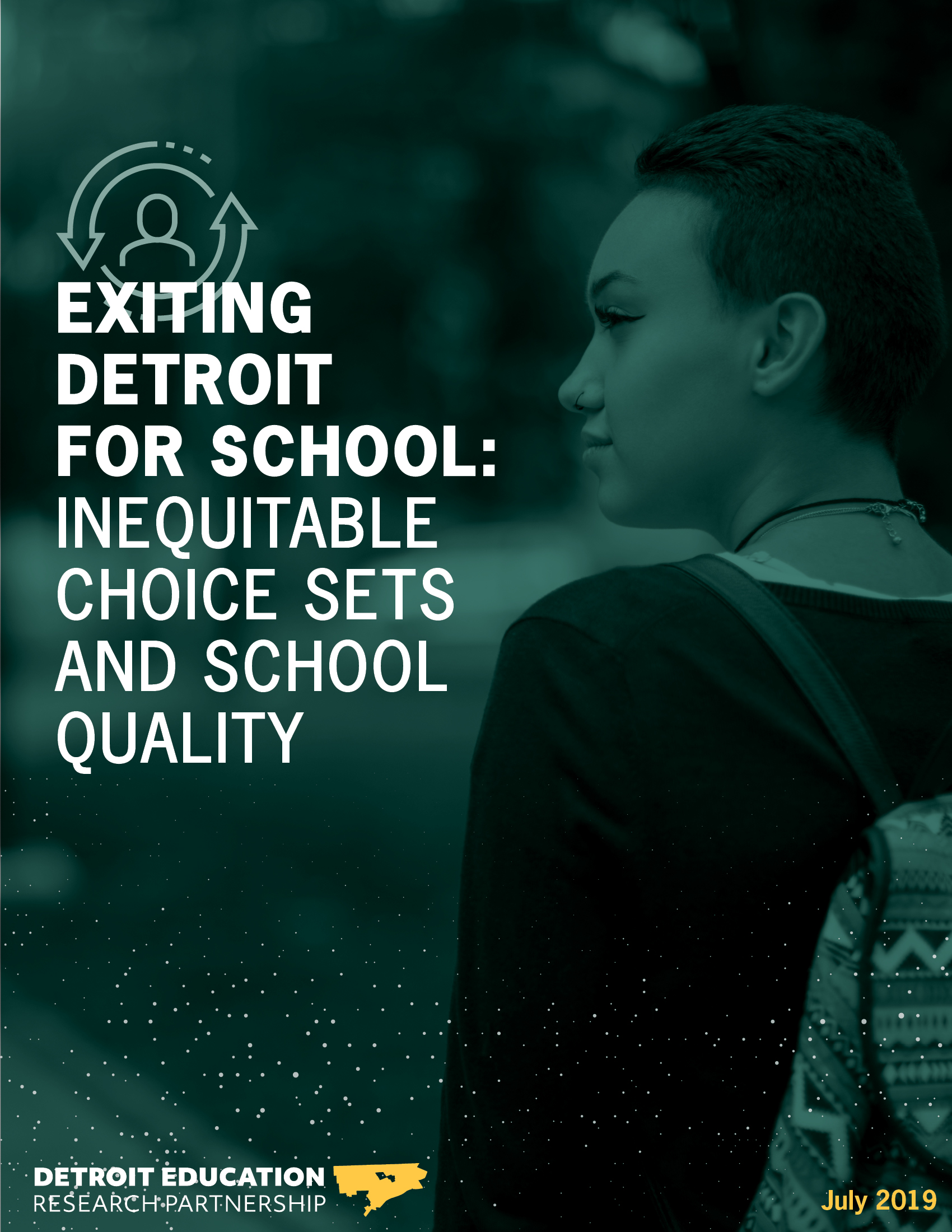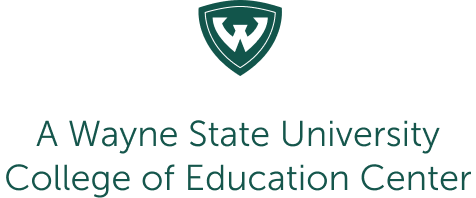Topic: School Choice
The Role of School- Based Transportation in School Choice: Evidence from Detroit
In school choice systems, many families face geographic constraints. Yet, there is limited evidence on the association between school-based transportation and students’ school choice, especially in fragmented transportation contexts. Using unique data on Detroit kindergarten students’ eligibility and access to school-based transportation, we find that students with access to a bus at a school—either a traditional or shuttle-style bus—were 4-5 percentage points more likely to enroll in that school. The association was greater for traditional buses in higher-crime neighborhoods and for shuttle-style buses for farther-away choices. We did not find that this association differed by block-group-level household car ownership. Our findings suggest that school-based transportation can increase school choice access, depending on policy design and contextual factors. This report was co-published with the National Center for Research on Education Access and Choice (REACH).

Parent Sensemaking and School Choices Amidst Educational Controversies
From our 2023 collaborative study with the National Center for Research on Education Access and Choice (REACH), this presentation explores the relationship between national political discourse, parent sensemaking, and School Choice. This longitudinal study aims to better understand the impact of national political discourse around race and gender on parents' School of Choice.

The Role of School-Based Transportation in School Choice: Evidence from Detroit
From our 2023 Association for Public Policy Analysis & Management (APPAM) conference presentation on the relationship between School Choice and student transportation options offered in and around Detroit.

School Transportation Mode and Student Attendance Across Schools of Choice
The availability and reliability of school transportation is essential for regular student attendance at school. Yet, school transportation resources are stretched for both families and school districts in cities with widespread school choice, where students’ residences do not determine where they enroll in school. This study provides some of the first evidence on how Detroit students get to school. Going beyond eligibility for the school bus, we use linked survey and administrative data to determine how students get to school, the student and school characteristics associated with riding the school bus, and how mode of transit is associated with attendance.

School Access and Transportation in a Time of COVID
This study examines the impact of the COVID-19 pandemic on school mobility and enrollment in Detroit and NYC.

Economic and Educational Opportunity in the Context of Neighborhood Change
Children growing up in segregated and under-resourced neighborhoods and schools have continuously faced structural inequities resulting in worse educational and economic outcomes. In highly segregated and under-resourced neighborhoods, one way that educational inequality persists is through inequitable access to resources and information through social networks. Federally sponsored housing programs have sought to address these inequities by disrupting concentrated poverty and racial segregation in neighborhoods, but one challenge of such programs has been their primary focus on housing, neglecting other neighborhood conditions and social resources. HUD’s Choice Neighborhoods Initiative (CNI) was established to address these prior limitations by strengthening community social cohesion through cross-sector collaborations. Prior research has demonstrated that social networks – one’s relationships and connections with others – could be a key driver of upward mobility for Black low-income youth. However, few studies have empirically explored how neighborhood interventions might expand or deepen the social connections of youth in ways that reduce inequality in educational opportunities. This study aims to describe and clarify the mechanisms through which a major federal housing initiative can reduce educational inequality for Black low-income youth by transforming their social networks. A second aim of this study is to examine whether key components of the CNI are implemented in ways that connect housing and school sectors to disrupt segregation, foster neighborhood and school integration, and empower residents, particularly low-income Black residents, to shape policy enactment.

Beyond the Bus: Reconceptualizing School Transportation for Mobility Justice
This essay combines an ecological perspective with a mobility justice theoretical framework to reconceptualize the relationship between school transportation and educational access. Authors Sarah Winchell Lenhoff, Jeremy Singer, Kimberly Stokes, James Bear Mahowald, and Sahar Khawaja document the problem of “getting to school ”that is at the intersection of students’ family, community, and social contexts and how it goes beyond whether there is a reliable mode of physical transportation. Bringing together a historical analysis of the policy landscapeand interview data from parents and students in Detroit, they find that school transportation problems reflect the unequal political, social, and economic context in which families navigate enrollment and attendance. They discuss how policymakers can advance mobility justice in school policy by equitably distributing transportation resources, engaging students and parents as experts in developing and communicating transportation policy, and using institutional power to remedy structural barriers to educational access.

School Transit and Accessing Public School in Detroit
Students in the Detroit Public Community Schools District (DPSCD) have the highest rate of chronic absence (missing 10% or more of school days) among large districts in the United States. Additionally, students in DPSCD are among the poorest students in the country, often lacking access to reliable personal transportation or public transit to facilitate getting to school. Although DPSCD offers school-sponsored transit, only 30% of K-8 students were eligible for such transit in 2018-19. Through the use of multilevel modeling, we sought to identify the association between eligibility for school-sponsored transit and attendance. Our findings indicated that there was a negative association of small magnitude between eligibility for school sponsored transit and school attendance. This counterintuitive finding may highlight the fact that transit eligibility is not sufficient to mediate the negative relationship between student poverty and attendance, and transit eligibility does not guarantee regular use of school-sponsored transit.

Race, geography, and school choice policy: A critical analysis of Detroit students’ suburban school choices
The purpose of this study is to advance our thinking about race and racism in geospatial analyses of school choice policy. To do so, we present a critical race spatial analysis of Detroit students’ suburban school choices. To frame our study, we describe the racial and spatial dynamics of school choice, drawing in particular on the concepts of opportunity hoarding and predatory landscapes. We find that Detroit students’ suburban school choices were circumscribed by racial geography and concentrated in just a handful of schools and districts. We also find notable differences between students in different racial groups. For all Detroit exiters, their schools were significantly more segregated and lower quality than those of their suburban peers. We propose future directions for research on families’ school choices as well as school and district behavior at the intersection of race, geography, and school choice policy.

Unregulated Open Enrollment and Inequitable Access to Schools of Choice
In severing the link between residential address and school assignment, school choice policies have the potential to decrease school segregation and increase educational equity. Yet, this promise is undermined when school choice creates greater opportunity for those who are already privileged while limiting access to students from historically marginalized groups. This study combines data from a new survey of local open enrollment policies in Metro Detroit, student-level administrative records, and geographic data to critically analyze the local discretion provided in Michigan’s interdistrict school choice policy in relation to the goals of access to schools of choice, desegregation, and educational equity. I find that local school districts implement provisions of state policy in ways that restrict access to Black and economically disadvantaged students while creating pathways of opportunity for others. Districts are incentivized to implement these restrictions because of the inequities built into the state school funding formula and the racialized geography of Metro Detroit that is mechanized in district and county boundaries to restrict access. This study has implications for the regulation of local school choice markets and the role they play in increasing equitable public school opportunities.

School Transportation Policies in Detroit
A patchwork of different school transportation policies exist in Detroit, with some schools offering traditional school busing, some offering shuttle-style buses, some offering subsidized public transportation, and many offering no transportation at all. This report documents the available school-based transportation for Detroit students in DPSCD and charter schools.

Exiting Detroit for School: Inequitable Choice Sets and School Quality
Research has documented the complexity of parent-decision making within school choice marketplaces, including the ways in which individual preferences, social networks, and geography influence where parents choose to enroll their children in school. Yet, parent choices are constrained by the ways in which these dynamics intersect with existing school characteristics and locations. By constructing unique choice set “landscapes” for 194 Detroit neighborhoods, taking into account where current neighbors attend school in the city, this paper contributes new evidence on the influence of peer enrollment on school choosing, and how peer choice sets differ from students’ nearest schools. We find that parents are responsive to lower quality schools in their choice sets when choosing to exit and that choice set quality varies by race, with Black students having lower quality schools in their Detroit choice sets.

School Characteristics and Student Mobility in Detroit
Within- and between-year mobility was particularly high among Detroit resident students compared to other students in Metro Detroit. Students were less likely to make a within-year move if they attended a school categorized as having a high rating in organizational climate, as measured by the 5Essentials surveys. Rates of school-level chronic absence were associated with both within- and between-year mobility, suggesting that other elements of school organizational climate may influence student movement.

Exiting Detroit for School: Inequitable Choice Sets and School Quality
Students who exited Detroit for school had lower quality schools (test score performance, teacher and student stability, new teachers, discipline) in Detroit than students who stayed. Students who attended a non-Detroit school enrolled in schools that had, on average, higher discipline rates, more new teachers, lower teacher retention, and higher test scores than their choice sets in Detroit. The physical and cultural geography of students’ neighborhood choice sets varied dramatically across the city. Students who lived in neighborhoods where most of their neighbors went to just a few schools were less likely to exit.

Student Exit, Mobility, and Attendance in Detroit
This comprehensive report documents Detroit students' school choices, attendance, and mobility as of 2017-18. Nearly a quarter of Detroit students attended a public school in the suburbs in 2017-18. Most had previously attended school in Detroit. Students were more likely to have attended school outside the city when they had fewer city schools near where they lived, raising important policy questions about school locations, closures, and access. Seventeen percent of Detroit students switched schools between school years when they were not in a transition year. Early elementary school and 9th grade students were most likely to be movers, and more than half of all non-routine moves were among students who did not change residence, suggesting that dissatisfaction, disciplinary pushout, or other school-level issues may be contributing to mobility. More than half of students who attended school in Detroit were chronically absent, missing 10% or more of the school year. Controlling for individual student characteristics, students were more likely to be chronically absent if they attended a school with high rates of student mobility, were new to the school, commuted further to get to school, and when they lived in neighborhoods with higher asthma rates.



